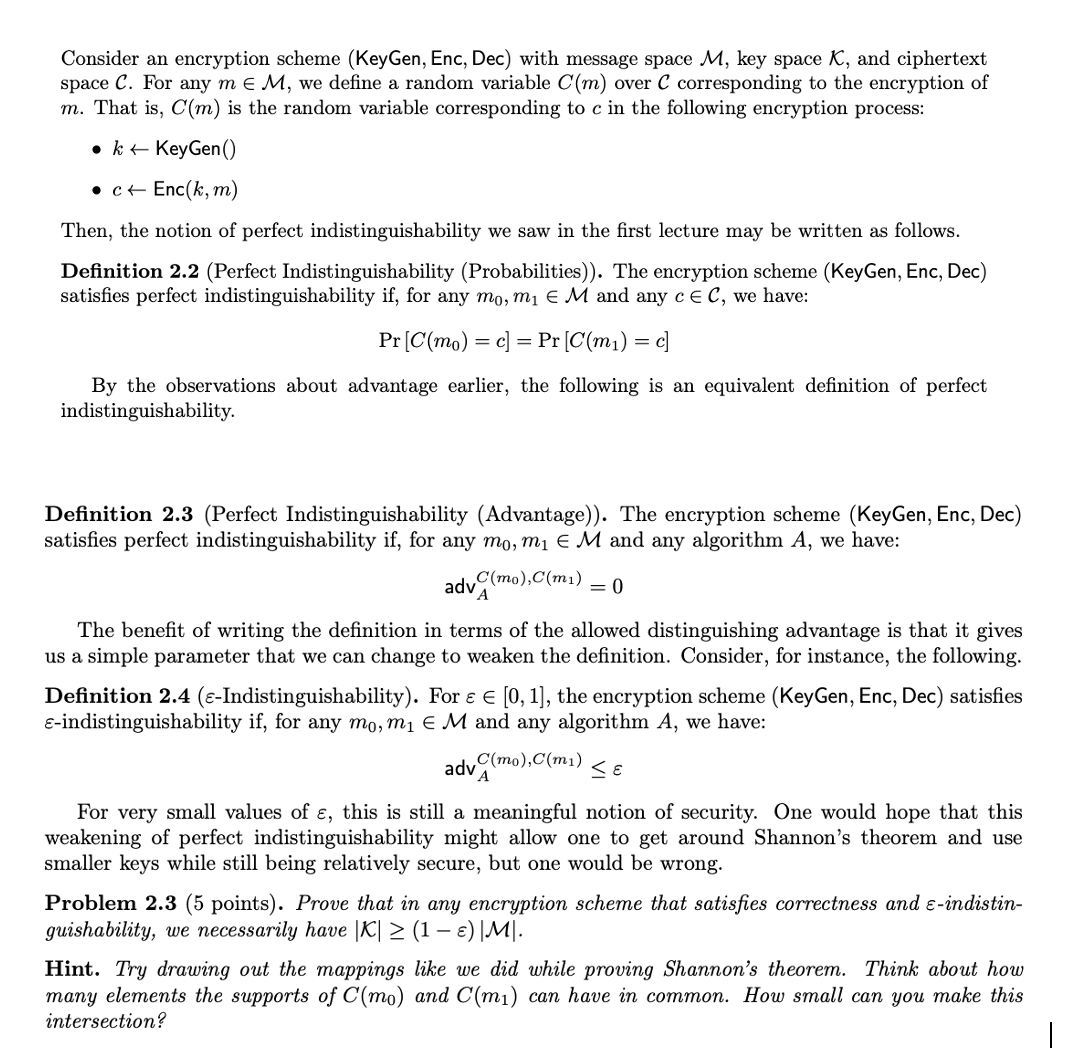Answered step by step
Verified Expert Solution
Question
1 Approved Answer
Consider an encryption scheme ( KeyGen , Enc, Dec ) with message space M , key space K , and ciphertext space C . For
Consider an encryption scheme KeyGen Enc, Dec with message space key space and ciphertext
space For any minM, we define a random variable over corresponding to the encryption of
That is is the random variable corresponding to in the following encryption process:
klarrKeyGen
clarrEnc
Then, the notion of perfect indistinguishability we saw in the first lecture may be written as follows.
Definition Perfect Indistinguishability Probabilities The encryption scheme KeyGen Enc, Dec
satisfies perfect indistinguishability if for any inM and any cinC, we have:
By the observations about advantage earlier, the following is an equivalent definition of perfect
indistinguishability.
Definition Perfect Indistinguishability Advantage The encryption scheme KeyGen Enc, Dec
satisfies perfect indistinguishability if for any inM and any algorithm we have:
The benefit of writing the definition in terms of the allowed distinguishing advantage is that it gives
us a simple parameter that we can change to weaken the definition. Consider, for instance, the following.
Definition Indistinguishability For the encryption scheme KeyGen Enc, Dec satisfies
indistinguishability if for any inM and any algorithm we have:
For very small values of this is still a meaningful notion of security. One would hope that this
weakening of perfect indistinguishability might allow one to get around Shannon's theorem and use
smaller keys while still being relatively secure but one would be wrong.
Problem points Prove that in any encryption scheme that satisfies correctness and indistin
guishability, we necessarily have
Hint. Try drawing out the mappings like we did while proving Shannon's theorem. Think about how
many elements the supports of and can have in common. How small can you make this
intersection?

Step by Step Solution
There are 3 Steps involved in it
Step: 1

Get Instant Access to Expert-Tailored Solutions
See step-by-step solutions with expert insights and AI powered tools for academic success
Step: 2

Step: 3

Ace Your Homework with AI
Get the answers you need in no time with our AI-driven, step-by-step assistance
Get Started


